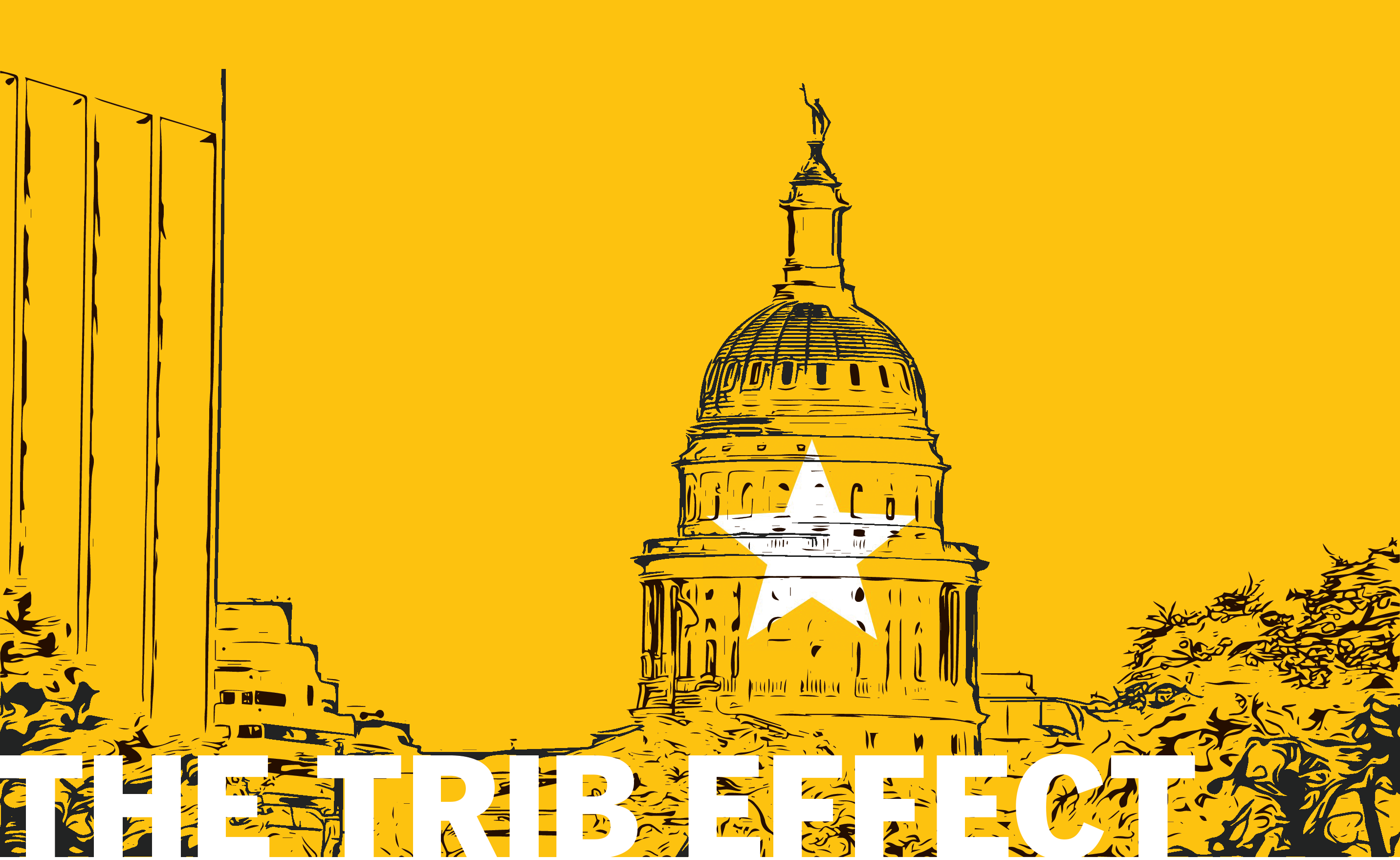
By Barbara Allen
The Texas Tribune, launched 10 years ago this week, was born from business plans scribbled on napkins and whispered wooings in the bowels of the Texas State Capitol. It changed the way Texas politicians do business — because someone is always watching.

By Barbara Allen
The Texas Tribune, launched 10 years ago this week, was born from business plans scribbled on napkins and whispered wooings in the bowels of the Texas State Capitol. It changed the way Texas politicians do business — because someone is always watching.
Like many journalists in 2009, Emily Ramshaw was worried about her future.
As a Dallas Morning News reporter covering the statehouse in Austin, she loved her job but had survived four rounds of layoffs in six years.
She took the LSAT — “twice, poorly,” she said — but was still contemplating law school when Ross Ramsey came calling. The stalwart in Texas journalism ran a long-standing weekly insider newsletter on Texas politics.
And he had a big idea.
The two sat in the cafeteria in the capitol building’s basement over two bad cups of coffee as Ross whispered his pitch.
“We had this really Deep Throat conversation where he said, you know, ‘Me and this other guy you know, but whose name I can’t tell you, we’re going to launch this brand-new digital media start-up with a totally new business model for journalism and we want you to come with us,’” she said.
What was riskier, she wondered — staying put or taking this leap?
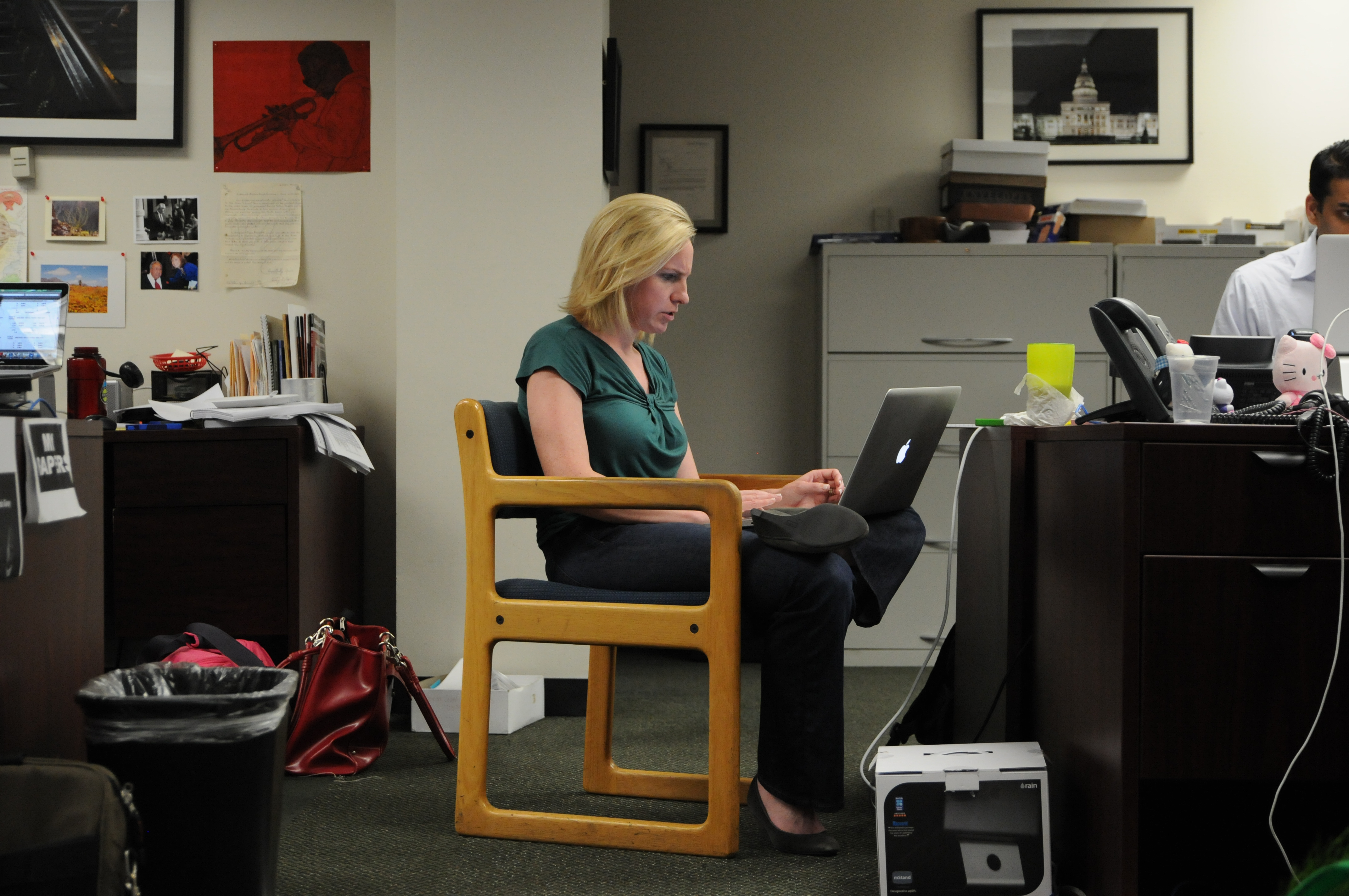
Ten years later, Ramshaw is the editor-in-chief of The Texas Tribune, which covers Texas politics and ticks the gold standard boxes for online, nonprofit, watchdog and non-partisan journalism.
The venture capitalist with a heart of gold
In 2008, John Thornton, the managing partner of a venture capital firm and an Austin philanthropist, started seeing “distressed newspaper assets” coming on the market that coincided with a small boom in news-related startups. His firm investigated — was news a new financial opportunity?
As we all know now, the answer was a definitive no.
“My team kind of closed their book and moved on, and I was left with this sinking feeling that what we were looking at was a market failure for coverage below the national level,” Thornton said. “That’s kind of what got my attention to begin with.”
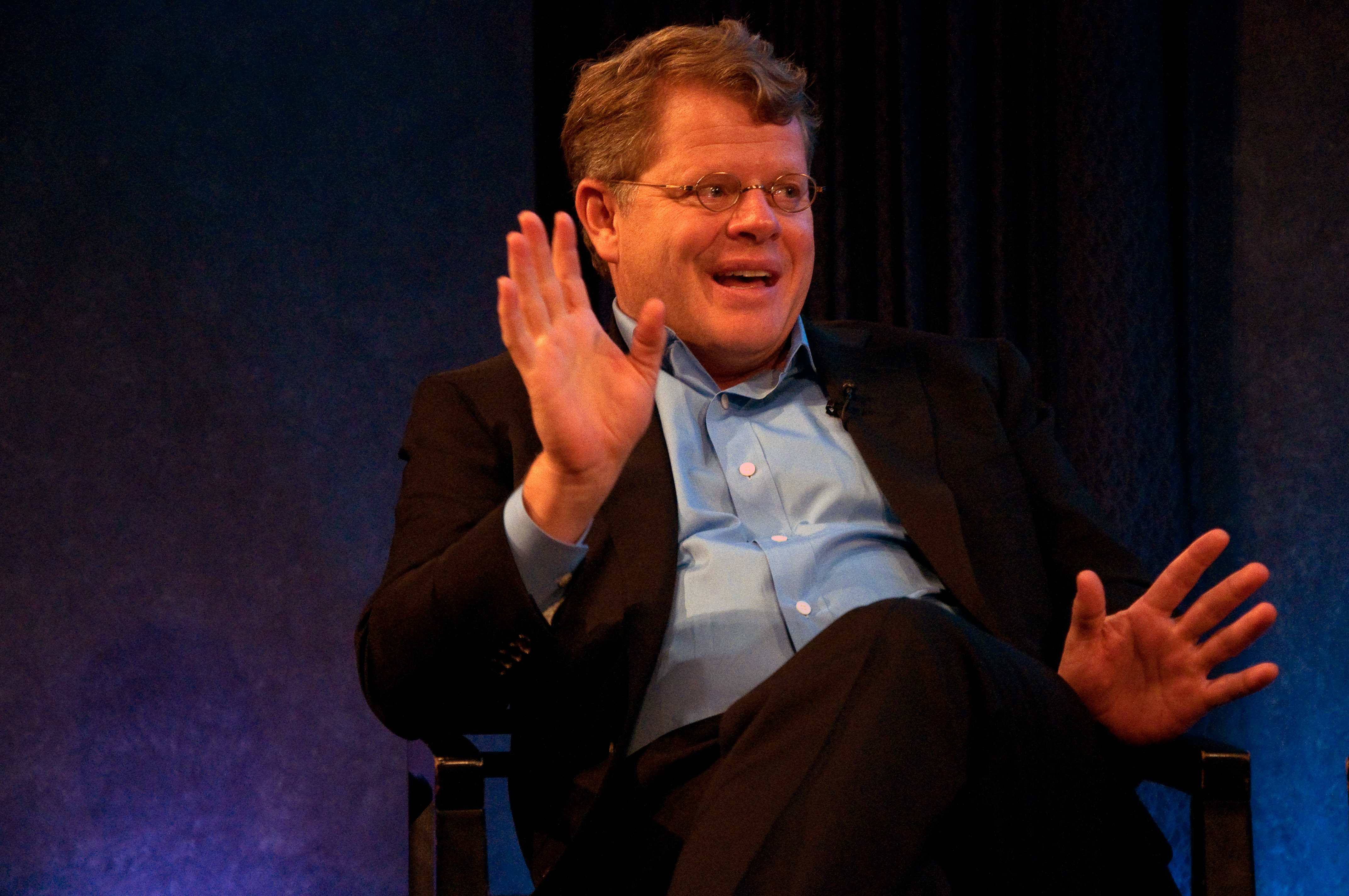
He was friendly with Texas Monthly editor Evan Smith, and the two started chatting casually around Thanksgiving of 2008 about a new business model for news.
Then came an Austin ballot initiative that had to do with real estate entitlements.
“A bunch of my friends are real estate developers and it was very controversial,” Thornton said. “I remember thinking, ‘OK, I haven’t really paid attention to this, where do I go to figure out how I really feel about this?”
Thornton was surprised to find a lack of reliable coverage on the issue.
The conversations he’d been having with Smith began to take on special meaning.
“I thought, ‘You know, this is some sort of sign that that we’re on the right path here.’”
The selective editor
Evan Smith had no intention of co-founding a new journalism property, but he was happy to bounce ideas around with his old friend Thornton and his new friend, newsletter owner Ramsey. The three met periodically for about six months with no clear plan in mind.
Smith suggested that the coverage of politics, public policy and state government could best serve the public interest.
“Basically the idea was, in baseball terms, hit ‘em where they ain’t,” Smith said. “(Don’t) do what everybody else is doing. Focus on what nobody else is doing.”
The three kept talking.
“I compared myself at the time to Dick Cheney helping George Bush find his vice president,” Smith said, “only to discover one day that (Cheney) was the one (Bush) was looking for.”
Finally, as Smith put it, the worm turned, and Thornton convinced him to become the editor of this new venture.
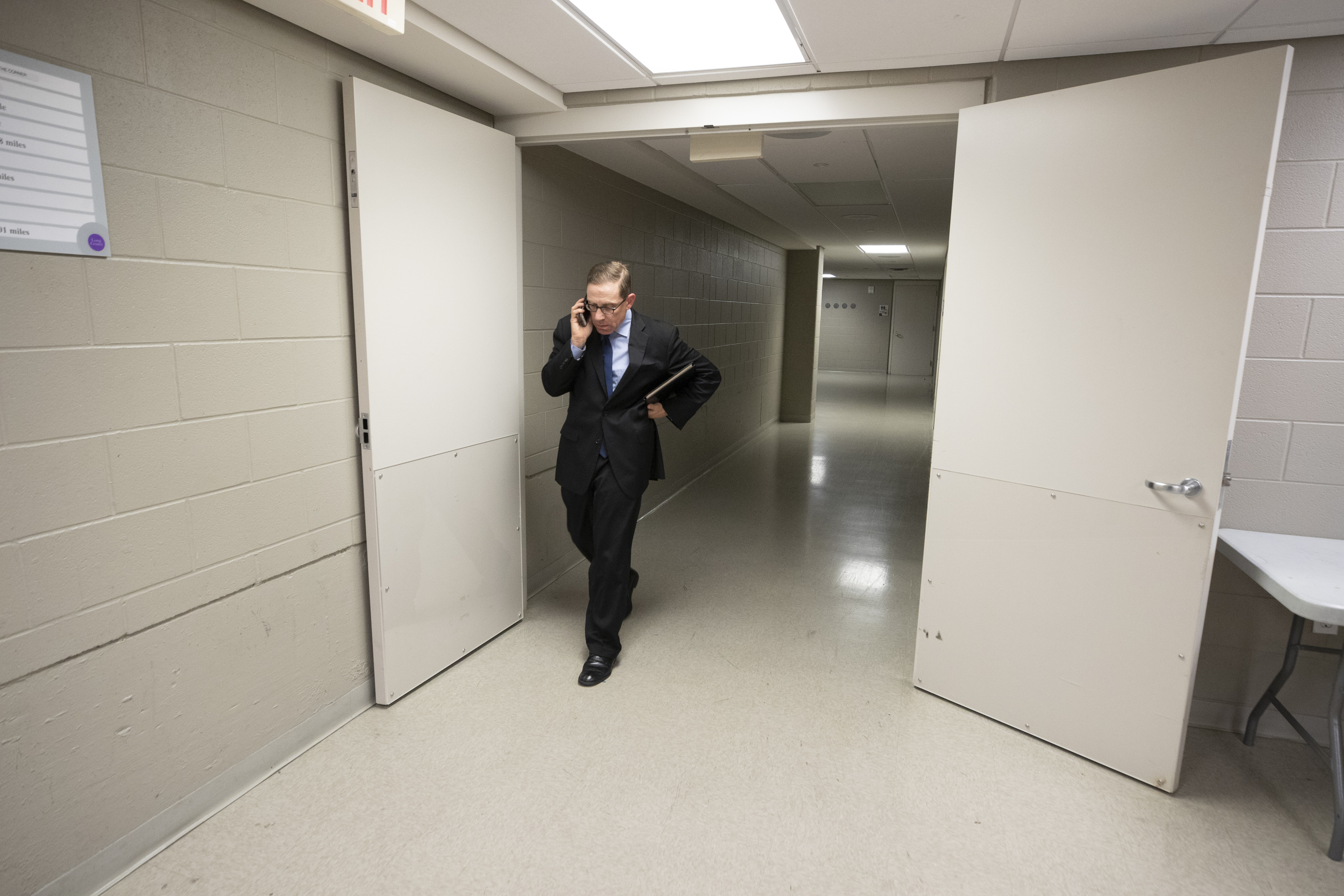
“I decided that (The Texas Tribune) did have potential, that the economic model was potentially viable, and that it might be fun to go off and help John save the world, or at least die trying,” Smith said.
The Capitol rat
Ross Ramsey was worried about his shrinking competition.
The long-time Texas political reporter with an insider newsletter watched the Texas press corps shrink from about 95 credentialed reporters covering the capitol in 1989 to about 30 journalists at the statehouse in 2008. When a friend suggested he and Smith have lunch, they found themselves talking about this decline.
“It was true in Austin and Sacramento and Oklahoma City and Albany and Springfield and everywhere around,” Ramsey said.
So what could concerned citizens slash journalists do?
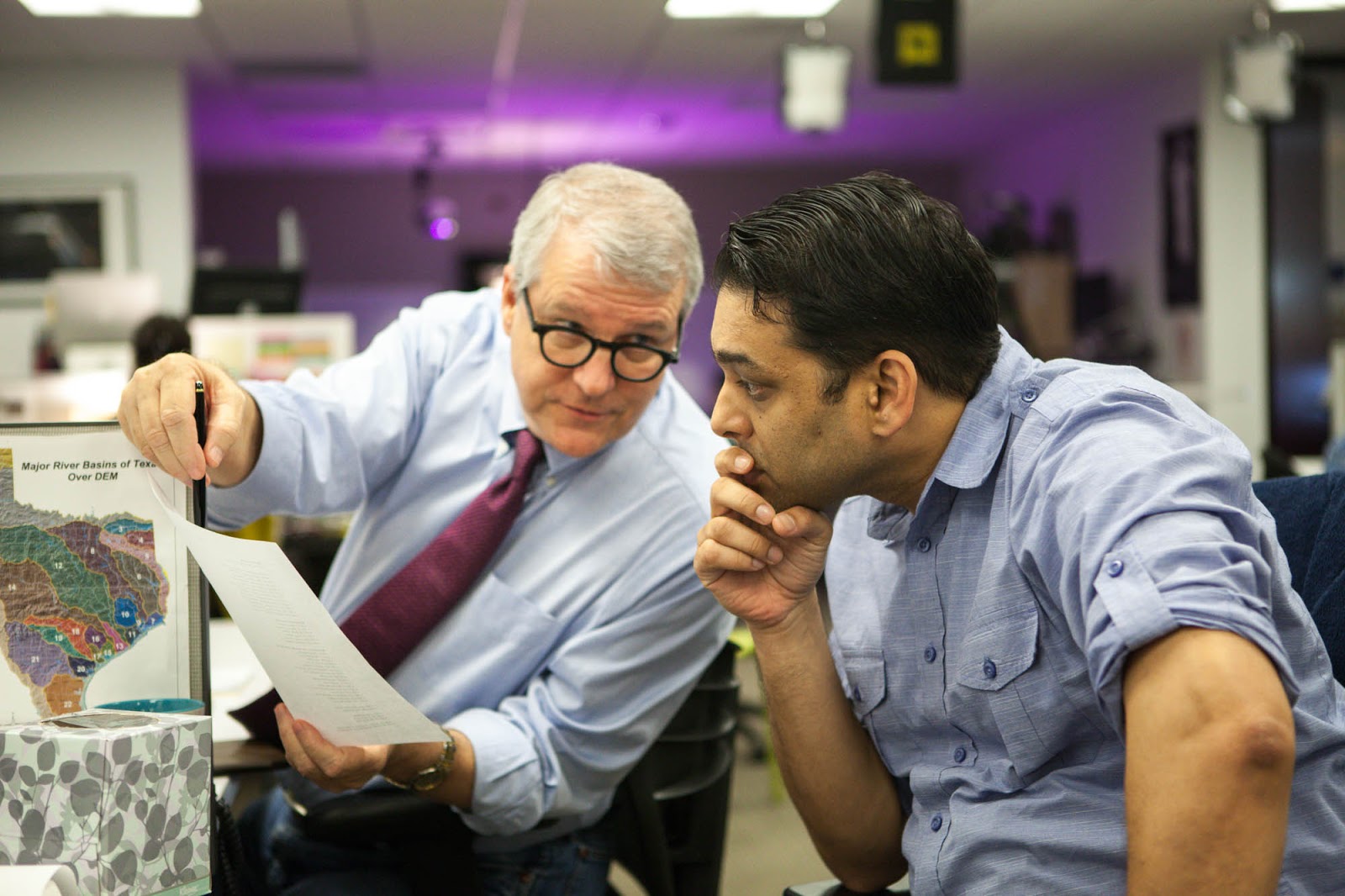
“It was really just a series of conversations,” Ramsey said of those early days kicking the tires with Thornton and Smith. “I didn’t really fully expect this to turn into a business.”
Besides, he said, Smith still wasn’t fully committed and didn’t yet want his name used, “so we just called him Voldemort.”
But after six or seven months of discussions, the three realized they’d hammered out a business plan.
Smith had the management and journalism experience while Thornton had the money and connections. Ramsey was a self-described “Capitol rat” who had reporting chops and knew all the players.
“And then we started phase two,” Ramsey said.
And that meant figuring out how to create a political reporting dream team.
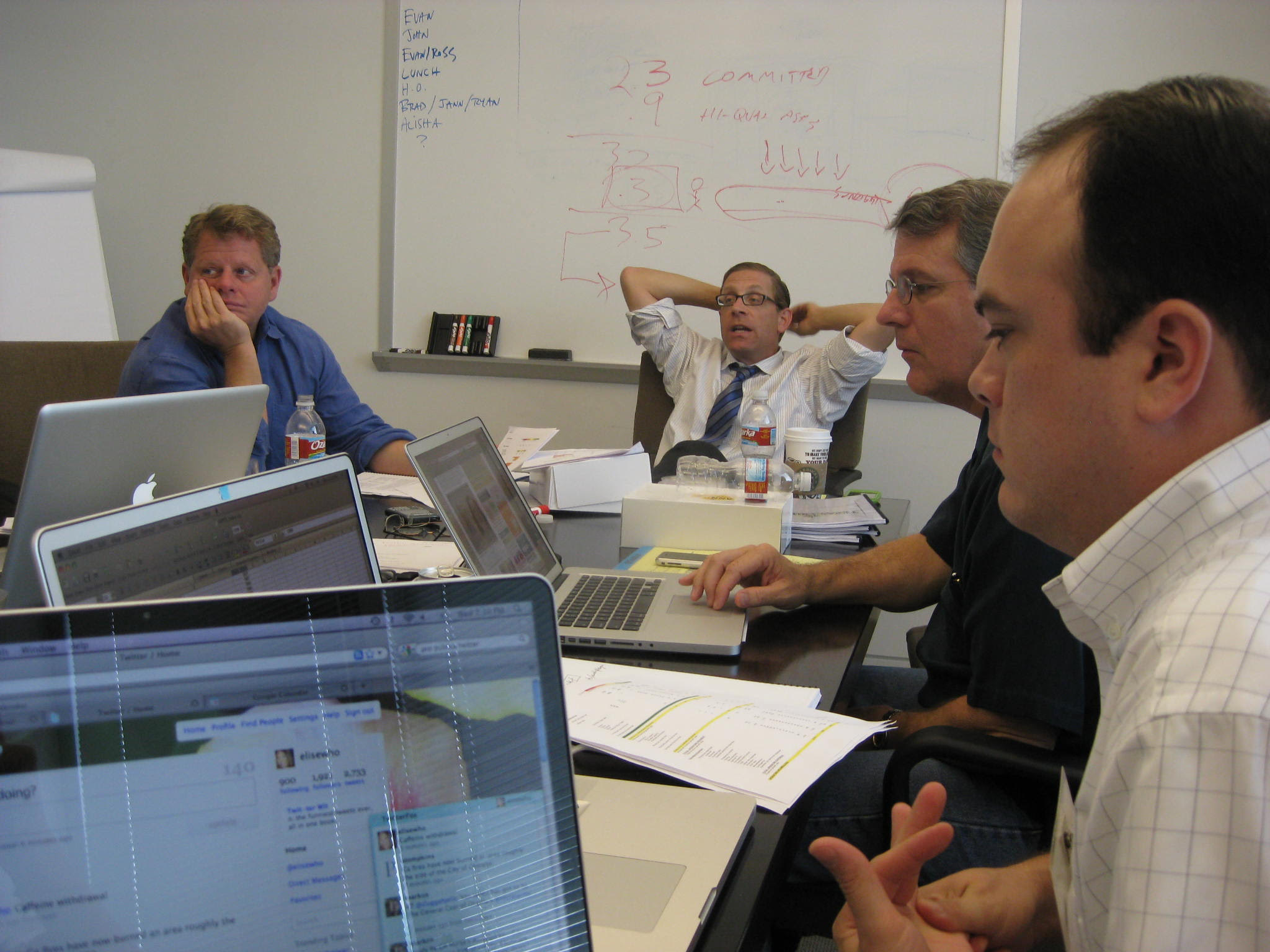
The game’s lineup
With an initial donation from Thornton of $1 million, the die was cast. Ramsey would be the managing editor, Smith the editor in chief and Thornton the board director. Smith and Thornton traveled the state asking for money and ended up raising just shy of $4 million before launch. Meanwhile, Smith and Ramsey began putting together their dream team.
“We sat in a restaurant and made the equivalent of a fantasy baseball draft list of journalists in the capitol community who we would love to get to come to work for us if money were no object, if circumstances were no object,” Smith said. They got every single person on the list.
(Almost. Ramsey recalls it slightly differently— he said one journalist they wanted had just gotten accepted into law school and therefore didn’t enlist with them.)
So how did they pick people like Emily Ramshaw?
“You ought to hire the reporters you’re afraid to compete with,” Ramsey said. “The sub-rule is, don’t hire assholes. No matter how talented they are, try not to hire somebody who’s poisonous.”
Smith and Ramsey were looking for digital natives, the kinds of reporters who weren’t stuck in a medium to the exclusion of other platforms, and who understood that their deadline was now.
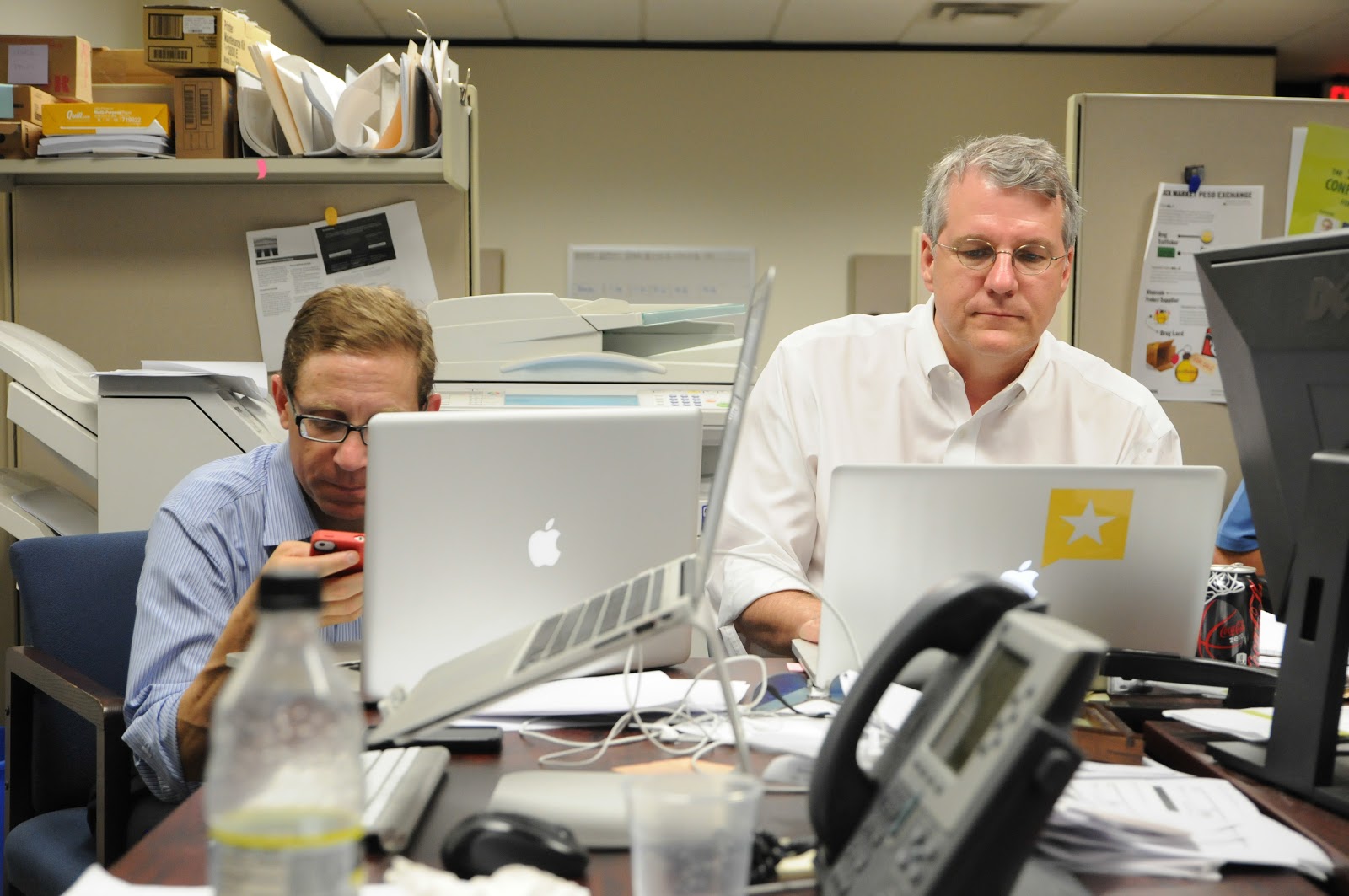
Each recruit was promised three years of a good salary.
“I was really careful to say this: It’s probably going to fail; most businesses do,” Ramsey said. “If it works, we’re still here, and if it doesn’t work, you’ve got a really interesting failure on your résumé.
“Every single one of them said, ‘Don’t you think this is risky?’ And my answer was provided by the condition of the industry at the time. I just said, ‘How is it where you are?’
“And that wouldn’t have sold 10 years earlier, because ‘How is it where you are?’ would have been, ‘It’s great. What are you, nuts?’”
They hired Dallas Morning News rising star Ramshaw; Austin’s KVUE-TV state political reporter Elise Hu, now a correspondent and video host for NPR; and Matt Stiles, who specializes in data analysis and visualization for the Los Angeles Times, among other Texas journalism stars.
A lot of their early hires were women. “I think women should be running everything,” Smith said.
The launch
Hu, now at NPR, remembers an early trip to an office supply store, because the newly minted Texas Tribune didn’t have trash cans in its office.

“It felt like summer camp,” she said.
The original core group of reporters were used to working together at the Texas legislature, but as competitors.
“I think originally there were 11 of us, so I had joked that we were Evan’s Eleven, you know like ‘Ocean’s Eleven,’ how he got together people of different skills — a guy who picked locks, a guy who was really good at bombs,” she said, laughing. “So I was the person who is really good at video and audio … and there was somebody who was really good at health and human services, and somebody who was really good at covering immigration.”
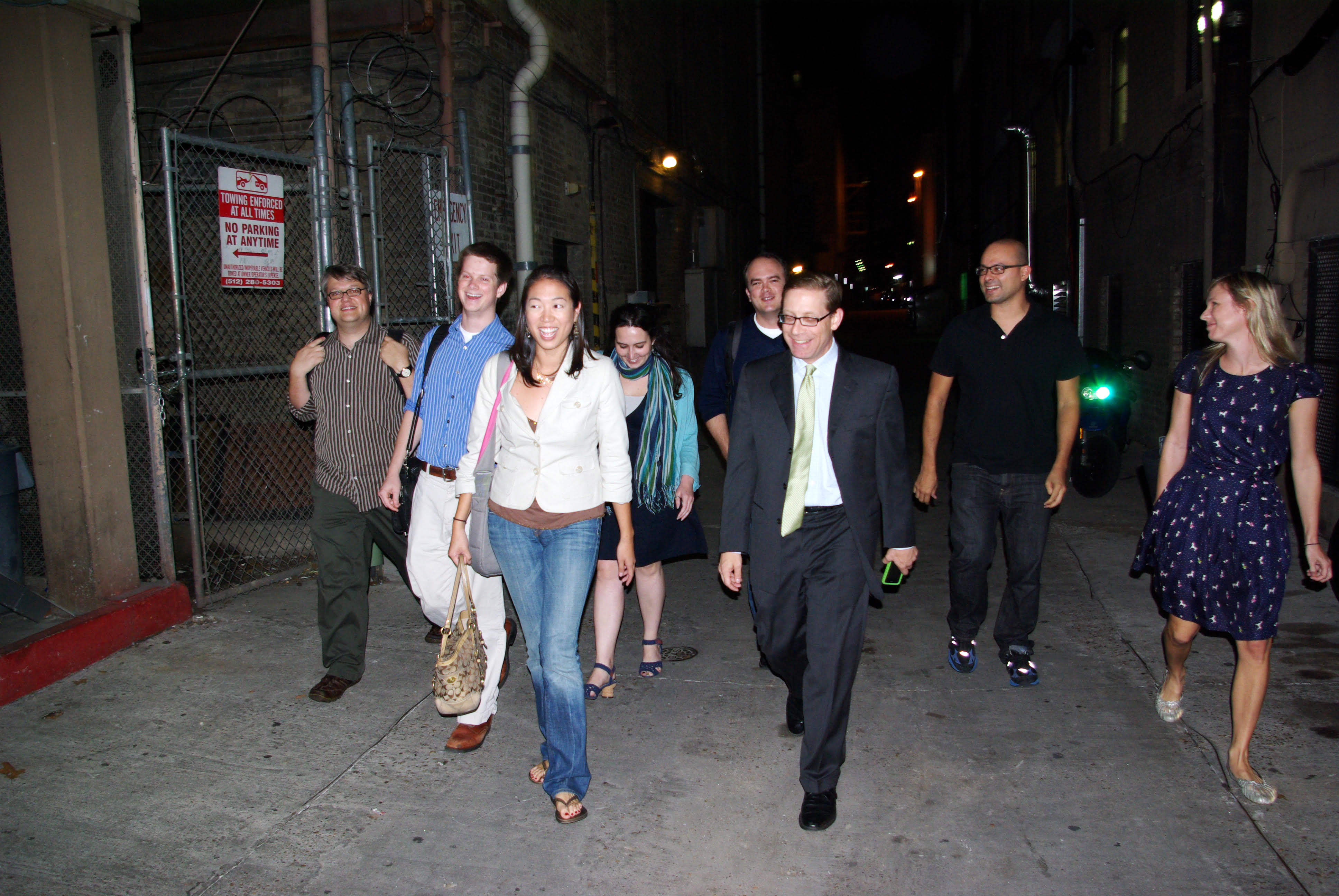
All the original journalists were young, hungry and willing to experiment.
“There were lots of emotional ups and downs,” she said of the days before the website was ready. “We were working these 15-hour days to make sure it was ready; we were eating in the office; there was this trash piling up everywhere of pizza boxes … so we’re just like living in the office like it was this college dorm.”
The Texas Tribune website officially went up on Nov. 3, 2009. It was set to go live at midnight, but bugs kept it from functioning until about 5 a.m. Hu shot a video of the moment of launch.
“There were any number of things at the beginning that we did not know, and did not know that we did not know,” Smith said. “We did not do research. We did not do a feasibility study or focus groups. We did not build a mock website to show people. We did not develop a business plan to show anybody.
“We did everything that you’re not supposed to do, and nothing that you are supposed to do.”
A decade of success
Regardless, The Texas Tribune flourished. Lawmakers coined “the Trib Effect” — the behavioral trends that occur when lawmakers know that someone is always watching. Over the last decade, The Texas Tribune has grown to almost 80 staffers and an annual budget of $9 million. About 2 million unique visitors stop by monthly (that’s 10 times what traffic was in 2009), and a strategic plan for 2025 includes doubling its audience, further diversifying its employee makeup, doubling membership, and increasing revenue through philanthropy, sponsorship and events.
The weekly Tribcast is one of more than 200 audio projects and podcast episodes produced a year. In 2018, the publication hosted 50-plus annual events that attracted 14,382 attendees. It boasts almost 66,000 newsletter subscribers, about 6,600 paying members, and as of publication, 123,858 Facebook fans and 206.9k Twitter followers.
Its diverse revenue stream, according to a 2018 financial report, is 25% from foundations, 24% from individuals, 19% from website sponsorship, 18% from events, 10% from membership. 5% is “earned.”
Most recently, The Texas Tribune announced a partnership with ProPublica to create a joint investigative unit to cover accountability stories throughout Texas. The partnership will create 11 positions, 10 of which will be housed in the Tribune’s office.
Keys to success
The founders and current employees are open books, they all said, about their keys to success — they want other journalists and nonprofit entrepreneurs to succeed.
Here’s some of what they said they’ve learned over the past decade.
Have a diverse revenue model.
“The promiscuous revenue model, as I like to call it, is key,” said Rodney Gibbs, chief product officer. “I think we’ve been really good about diversifying revenue … it’s foundational to our success because it buffers us from downturns in any one of those revenue sources.”
Build a good culture.
“We have a no-assholes policy and we have stuck firmly to it over the last decade,” editor-in-chief Ramshaw said. “Culture is the single most important thing to me about the Texas Tribune. We don’t hire divas. This is the place where we are collaborative and loving and a family and we take care of each other.”
Smith said that everyone at all levels of the business has a voice in the decisions about policy and hiring.
“Everyone from the lowly fellows up to the CEO really buy into the mission,” Gibbs said.
Find your niche.
Texas is an advantageous market for this kind of journalism. It’s got a lot of big cities, the world’s 11th largest economy, lots of oil, tons of school children and college students, and the biggest border with Mexico of any state.
In addition, “Texans have a sense of community and place that other states don’t always have,” Ramsey said. And that simply means other journalism entities need to survey their own landscape.
“I don’t think our exact business model is the exact right fit in any of those 70-plus nonprofit newsrooms that have sort of started up in the Tribune’s model in the last decade,” Ramshaw said. “I do think there are iterations of this model that are specific to individual communities that work — it’s just about experimenting and figuring out what that is.”
More on that …
Smith likens the Tribune to a restaurant — and he’s not interested in franchising. (You can tell he’s given this speech before):
“It is indeed the case that our chicken at our restaurant is delicious,” Smith said. “If you want to come to Texas and you want to eat our chicken, by all means we’re happy to serve it to you. If you want the recipe we’re happy to share it. If you want to see the menu, how we price all the dishes —we’re happy to share that with you. If you want to come and walk around the kitchen and see how we’ve laid it out, what equipment we have chosen to put in there that allows us to succeed as a restaurant, by all means, come. But I’m not opening my restaurant in your city.
“Open your own damn restaurant. Make your own damn chicken.”
Roll with the unexpected.
Ramsey said one early misstep was locking into a website layout with a kind of four-story template. Early on, they didn’t always have four stories, let alone four photos.
They also weren’t ready for heavy traffic.
“We had not built the capacity we needed for a surge,” Ramsey said. On an early election night, the audience “took the site down. … It just baked the thing.”
And when stuff goes bad, be cool.
Fail fast.
Ramsey said Thornton introduced the now popular concept “fail fast” to the team.
“Some things you’re going to try are gonna blow up,” Ramsey said. “The idea is to collect the information from that blow-up or that failure that’s useful to you, put the recriminations behind you and move on to the next thing.”
And don’t yell, he said. Leaders shouldn’t be screamers.
Design your rocketship first.
For those who are seeking funding ideas, Ramsey has a simple response.
“Coming at this as a business model is the wrong way to come at it,” he said. “It’s interesting to me that the conversation about what we’re doing is mostly about the business model, when I think the success of what we’re doing is mostly about the journalism.
“We designed the rocketship we wanted, and then we figured out how to pay for it.”
Be smart about money.
In 2012, Smith said, the deficit and profit lines crossed, and every year since then the Texas Tribune has run in the black, coming in within a percentage point or so of what it told its governing board it would spend.
“We’re remarkably disciplined,” Smith said. “We run this like a business; we have a handle on our expenses.”
Ramshaw said a key to their success was investing in the business staff aggressively from day one. Gibbs said the same thing about the technology team.
Shed old habits.
Managing editor Corrie MacLaggan said that part of the key to success is shedding old production cycle habits and monitoring the audience for cues. For example, though The Texas Tribune considers itself a 24/7 news operation, its traffic is stronger Monday-Friday. Rather than post new stories in a newspaper-focused 6 a.m. cycle, they like to post about 1 a.m. and concentrate on weekdays over weekends, generally.
Be patient around technology.
“Over the years we’ve learned not to chase shiny objects,” Gibbs said. “Yeah, that looks cool, but how does it serve our bigger strategy? Do we really have the bandwidth to take on that cool thing that The Washington Post does when they have a lot more resources than we do?”
The next decade’s wide open
Ramshaw estimates that she now spends a quarter to a third of her time “evangelizing for our business model” nationally.
“It ranges from small scrappy nonprofit start-ups that are absolutely following directly in our footsteps to major legacy for-profit newsrooms that are bringing us in to help them pivot or to help them build a nonprofit offshoot of what they’re doing,” she said. “So I mean we are playing a critical role in educating newsrooms big and small of all forms and of all types of business models not just around the country but around the world.”
She’s thrilled with the path her career has taken her.
The other day, Ramshaw was speaking to a group at the Obama Foundation in Chicago when the former president himself walked in and sat at the back of the room.
“Somehow I didn’t lose my train of thought,” Ramshaw said. She credits the original leadership at the Tribune for making such opportunities possible.
Thornton has shifted his journalistic focus to a news venture — the American Journalism Project, which has raised $42 million in an ambitious effort to rebuild local news by handing out some of that money to deserving non-profit digital sites.
“To me, the art in this is trying to take the replicable pieces of the Tribune and apply them in other places 10 years later,” he said.
Thornton said he’s incredibly proud of having founded the Tribune.
“It’s just like having a baby,” he said.
If you really knew how hard it was, you’d never do it.
“But I’m so glad that we did.”
By the numbers
The Texas Tribune’s highlights and facts (some information taken from 2018 annual report):
- Its 2018 annual budget was about $9 million dollars.
- Its content is available for free to other news organizations. According to the Tribune’s pixel tracker, 254 domains have republished its work in 2019 alone.
- It is deliberately and unwaveringly nonpartisan.
- It has grown from the original 17 staffers to almost 80 full- and part-timers with personnel in Dallas, El Paso, Washington, D.C., and soon, Houston.
- About 2 million unique visitors stop by monthly (that’s 10 times what traffic was in 2009).
- A recent strategic plan for 2025 includes doubling its audience, further diversifying its employee makeup, doubling membership, and increasing revenue through philanthropy, sponsorship and events.
- The weekly Tribcast is one of more than 200 audio products/podcasts produced a year.
- The Tribune hosts databases such as the Government Salaries Explorer and Education Explorers.
- Its signature annual event is The Texas Tribune Festival.
- Its total event attendance in 2018 was 14,382.
- It boasts 65,827 newsletter subscribers.
- It has 6,559 paying members as of October 2019.
- It has 123,858 Facebook fans and 206.9k Twitter followers as of publication time.
- It livestreams the legislature, among other things.
- It boasts a strong college fellowship program.
- Its funding breakdown in 2018 was: 25% from foundations, 24% from individuals, 19% from website sponsorship, 18% from events, 10% from membership. 5% is “earned.”
- Here are some of its award-winning documentaries and projects:
- And most recently, The Texas Tribune announced a partnership with ProPublica to create a joint investigative unit to cover important accountability stories throughout Texas. The partnership will create 11 positions, 10 of which will be housed in the Tribune’s office.
This article was updated to clarify that the Texas press corps shrunk from about 95 credentialed reporters covering the capitol in 1989, not 1998, to about 30 journalists at the statehouse in 2008.
Barbara Allen is the managing editor of Poynter.org. She can be reached at ballen@poynter.org or on Twitter at @barbara_allen_
Written by Barbara Allen
Designed by Ren LaForme

